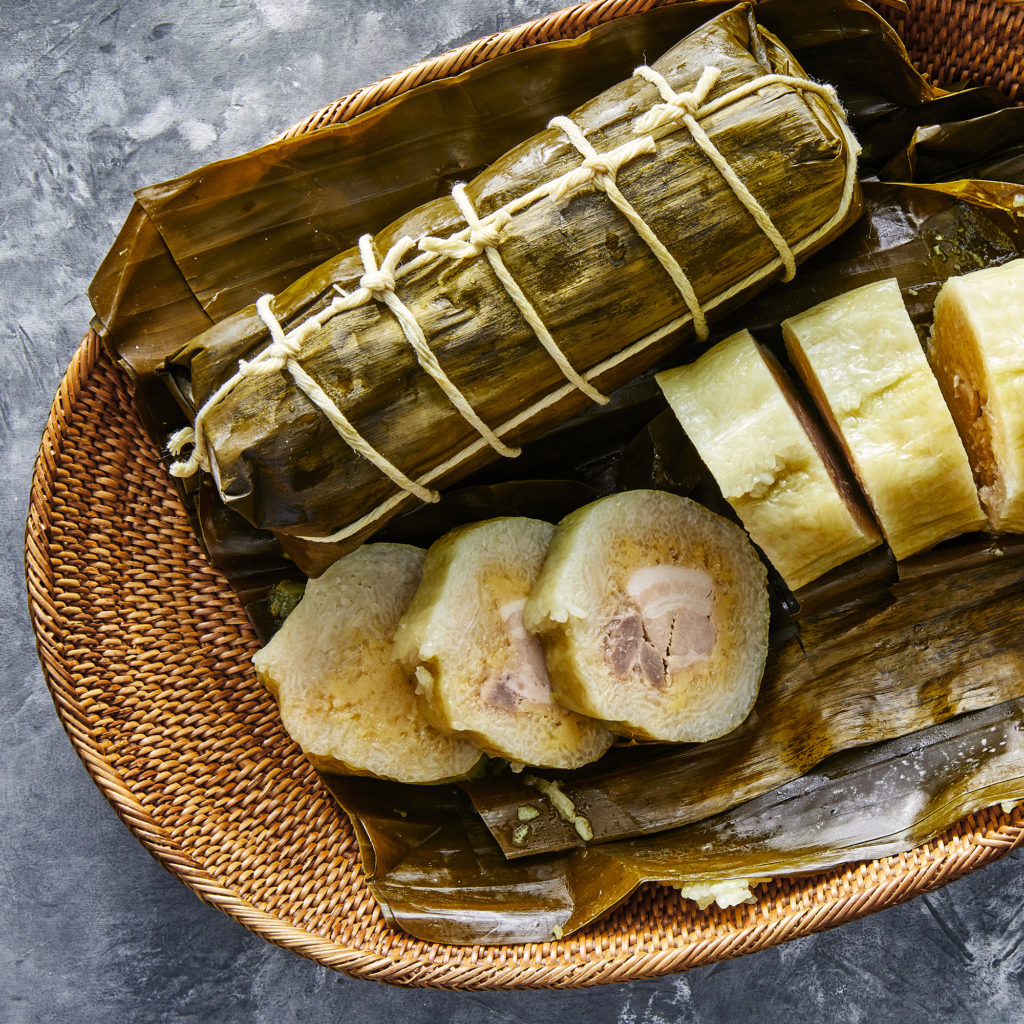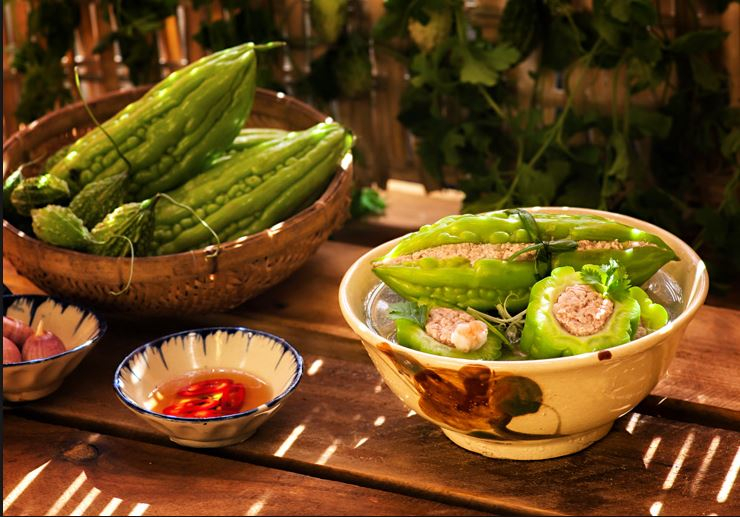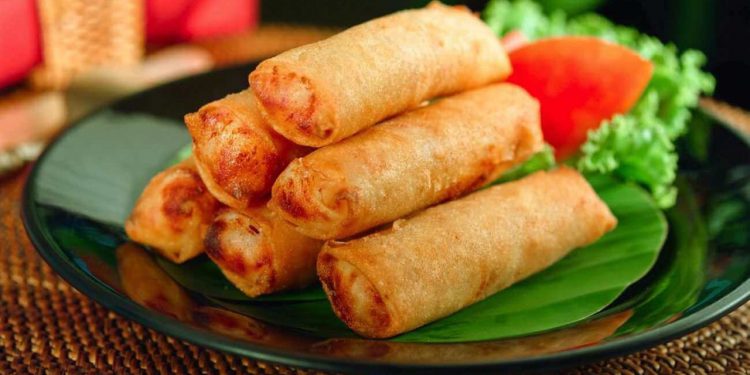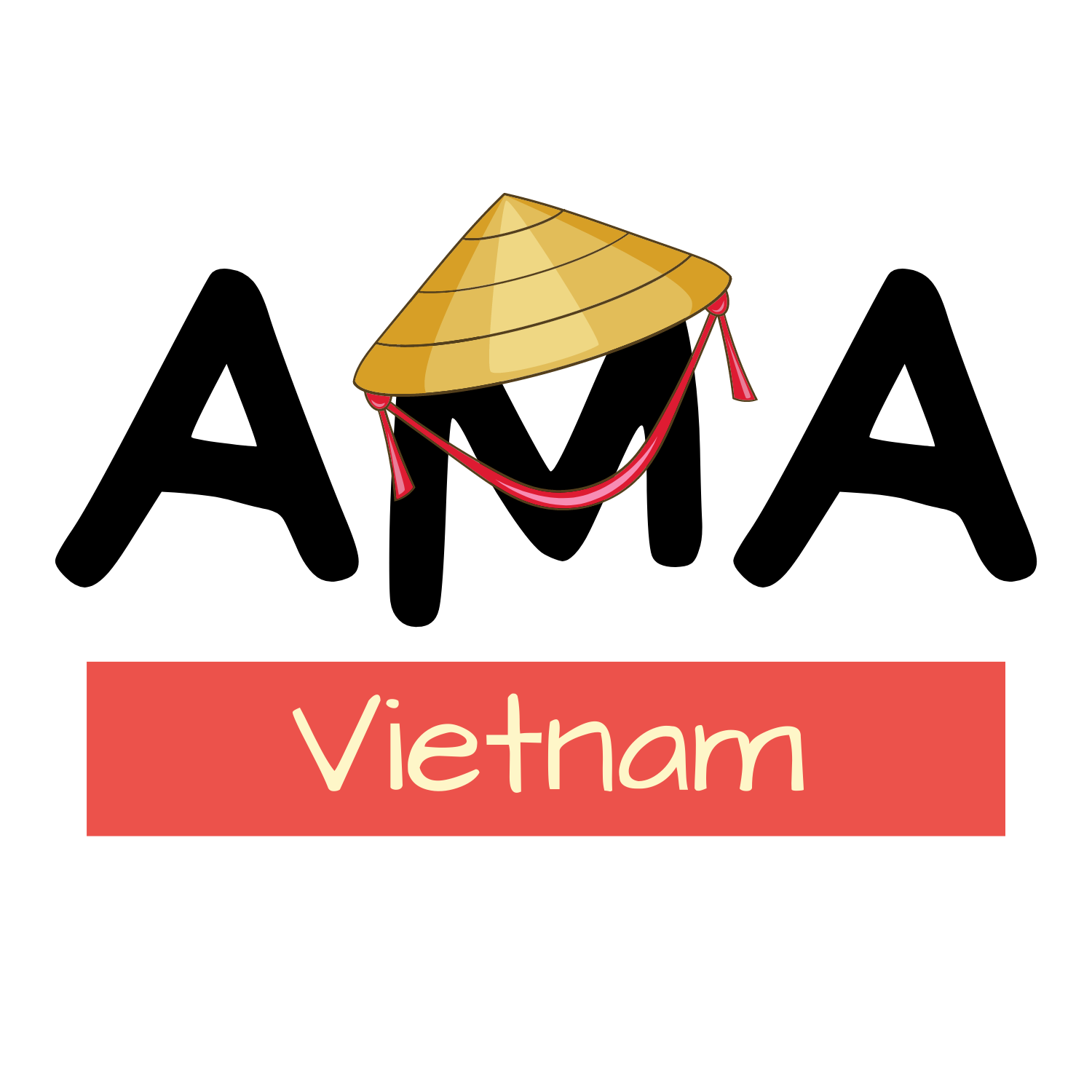The answer is yes, we definitely eat a lot of different traditional Vietnamese food for Tet, from some familiar names to plates that you might never hear of them before.
Let’s dive deeper into what they are and why they do have the privilege of being present during the Vietnamese Lunar New Year.
1. Bánh Chưng (Chung cake)

Banh Chung is a signature of Tet. It’s made of sticky rice, meat, and beans, then it’s carefully wrapped in dong leaves, and cooked for hours. When you see this dish around, you know the Vietnamese Lunar New Year is close.
According to legend, once upon a time, Banh Chung was one of the gifts that Lang Lieu prince offered to the sixth Hung King (approximately 1712 B.C). Given the deep meaning behind this cake, the king decided to pass the throne to Lang Lieu.
So what is that meaning of Banh Chung?
The message from the cake expressed respect and gratitude for source of life and ancestors.
First, Banh Chung is made of rice which is a treasure in an agricultural country like Vietnam. Rice is the crucial food that feeds and helps life going on.
In addition, the square shape of Banh Chung represents Earth regarding the belief at that time. The cake needs to be wrapped in green leaves and contains meat and beans inside to get the meaning of land carrying animals and plants.
This legend is officially taught in the 6 grade at school to remind young generation of this traditional Vietnamese food for Tet as well as the beautiful lesson that brings.
And more importantly, cooking Banh Chung is indispensable activity to welcome Tet, especially in North Vietnam.
In fact, making Banh Chung is not that easy in my point of view. The most tricky part is when you cover and tight it. You need to make it not too loose nor too tight. Otherwise, your outcome will disappoint you.
2. Bánh Tét (Tet cake)

Banh Tet is very similar to Banh Chung in terms of ingredients and its important role in the Vietnamese Lunar New Year.
However, there’s something clearly different between these two cakes. While Banh Chung is square-shaped and we often use dong leaves to cover it. While Banh Tet is cylindrical and is wrapped in banana leaves.
Furthermore, both cakes can be found everywhere in Vietnam. But Banh Chung is more popular in North, and Banh Tet is more common in Central and South.
Alike Banh Chung, Banh Tet also has a deep attachment to Vietnamese values and culture. It shows filial piety and gratitude to nature, the deceased as well as their parents, and what they have been having in life.
The cake is wrapped in many layers of banana leaves symbolizing the mother’s embrace of her child. It also express the desire to reunite after a year of working away from home.
Last but not least, with yellow-green bean paste inside solid sticky rice, this traditional Vietnamese food for Tet also conveys a message of wishing for a favorable rice season and prosperity for the new year ahead.
3. Dưa Hành (Pickled onions), Dưa Kiệu (Vietnamese pickled leeks)

“What to eat with Banh Tet and Banh Chung?” is a pretty common question from international friends. And the answer is Dua Hanh and Dua Kieu.
Dua Hanh is pickled onions and Dua Kieu is Vietnamese pickled leeks. They are not the main course but play an important role as they bring necessary balance to hundreds of Tet dishes.
And they are very similar from the recipe to the taste.
In fact, it’s not difficult to make these pickles. After the preparation process such as cutting them in good shape, cleaning, and light drying, we mix them with a mixture of vinegar and sugar. Waiting around 7-10 days, then we can eat.
It’s crunchy, the taste is sour and very fresh thanks to vinegar. That’s why Dua Hanh and Dua Kieu are the ideal accompaniments to Banh Chung, Banh Tet, and the other traditional Vietnamese food for Tet.
4. Thịt Kho Trứng (Vietnamese Braised Pork with Eggs)

Apart from Thit Kho Trung, we have many different names for this dish such as Thit Kho Hot Vit or Thit Kho Tau. It’s one of the typical Tet dishes. We usually use pork belly, duck eggs, and coconut water to cook this plate.
Even though we eat Thit Kho Trung as a daily meal, it’s still one of the most common traditional Vietnamese food for Tet.
One interesting fact about this dish is that we can keep it for a long time. My mom told me that the longer we cook and recook it, the tastier it is.
That’s why whenever she makes Thit Kho Trung, she always prepares a big pot so that we can enjoy its rich flavor in several days, even a week.
That’s also the reason why we prefer having some Thit Kho Trung during the Tet holiday as a great backup. If we are so busy to celebrate many Tet activities with family, friends and don’t have time to cook, we have this amazing dish available all the time.
Personally, this is one of my favorite food. I can eat double quantity than usual if this dish is on the menu as it’s incredibly yummy.
The rich taste of pork and eggs that have been thoroughly cooked and imbued with spices, combined with the sweetness of coconut water, the combination deserves a chef kiss.
And you know what? I’m willing to pay a high price for Thit Kho Trung if needed. Fortunately, I often eat it for free thanks to my mom 🙂
5. Thịt Gà Luộc (Boiled Chicken)

Worshiping Land Genie, Gods of Kitchen, and our ancestors is one of the important activities that we often do to celebrate during the Lunar New Year. As boiled chicken is an indispensable part of the offerings, it becomes one of the typical traditional Vietnamese food for Tet.
Vietnamese people have many ways to enjoy this dish during Tet holiday. The most simple way is to eat it directly with ginger fish sauce or a mixture of salt and pepper lemon.
We also often make a chicken salad (Gỏi Gà) which is a mix of boiled chicken and many different vegetables and herbs such as onion, carrot, Vietnamese mint (Rau Răm), cabbage, banana flowers.
I try to do this salad sometimes at home, it’s just so good!
6. Canh Khổ Qua (Kho Qua Soup)

Khổ Qua is bitter melon, it’s very popular in Vietnam and some Asian countries. As its name “bitter melon”, Khổ Qua has a very bitter taste. Some people cannot even eat it.
However, this vegetable is good for health, we eat it very often in our daily meal with different recipes. We can fry it with eggs, boil it then eat it with some dipping sauce or enjoy it as a hot soup.
And the presence of this soup is very common on the table in Vietnam during Tet holiday thanks to its name.
“Khổ” means difficulties. “Qua” means pass . So, if we eat Khổ Qua during the Vietnamese Lunar New Year, we believe that all suffering and bad lucks will be gone with the past. Then we will have a new year full of good luck and happiness.
7. Chả Giò (Spring rolls, Nem)

With its strong reputation all over the world, I guess you know what Spring Rolls are.
As its name in English “Spring Rolls”, this is one of the the most common food to welcome the arrival of Spring, especially Tet.
Depending on each region, we have a different way to call it in Vietnamese. In Central and South, we call Spring Rolls as “Chả Giò” while “Nem Ráng” is how my friends in the North named it.
Even though we name it differently, the recipe is not that different. The taste is similar and all versions are delicious.
With a balanced mix of pork and/or shrimp, vermicelli, wood ear mushroom, taro, carrot, green onion, red onion, egg, rice paper, oil, garlic, fish sauce, chili, lemon, sugar, Nem has been conquering millions of food lovers in the world.
8. Chả Lụa or Giò Lụa (Vietnamese sausage)

Chả Lụa (South) or Giò Lụa (North) is Vietnamese sausage. It’s usually made of pork or beef, wrapped in banana leaves, and cooked by steam.
People spread out orally a story that long time ago, Chả Lụa was a precious food that was only offered to kings on big holidays.
Nowadays, the quality of life is significantly improved and Chả Lụa’s price is not that expensive, this dish is occasionally served at certain events such as parties, weddings, especially during the Vietnamese Lunar New Year.
Furthermore, as some people love eating it more often, sometimes you can find it in the daily meals in Vietnam.
9. Bánh Mứt Tết (Tet confectionery and jam)

Mut Tet is the last traditional Vietnamese food for Tet in the list, but not least.
As I shared in the previous article How do Vietnamese celebrate the Lunar New Year (Tet)?, one of the typical activities that Vietnamese people often do to celebrate Tet is visiting relatives, neighbors, friends, and teachers.
Therefore, a tray of Tet confectionery and jam is something that every home must have to welcome visitors. It’s also a popular gift that Vietnamese people often offer each other before Tet arrives.
This traditional food plays as a special catalyst to make the conversation opener, more friendly, and more interesting. Eating a piece of jam and drinking a sip of tea is an amazing moment to enjoy Tet and catch up with friends and family.
Depending on the choice of each family, a tray of Tet confectionery and jam will be different. Some families decide to have just Tet jam, the others choose to have a mix of many different things.
There are candies, cookies, melon seeds, sunflower seeds, as well as various jams such as ginger jam, coconut jam, lotus seed jam, orange peel jam, kiwi jam, etc.
These jams made of thinly sliced gingers and fruits, and then rimmed with sugar.
It’s obviously sweet as it’s cooked with a lot of sugar, yet still, remain the taste of the original fruits. Enjoying it with a cup of hot tea is the best treat for Tet.
Over to you
As Tet is the most important event in Vietnam, we often spend time taking care of it from activities to traditional food. There are dishes that we usually eat only once during Tet such as Tet jam, Chung cake, Tet cake. That’s why whenever we see them, we know Tet is around the corner.
So, what Tet dish do you like the most or are curious to try first? Mine are Thịt Kho Trứng and Bánh Tét. I love the taste and I can eat it for the whole day 🙂
Another article on Vietnamese culture and traditions will be published soon. Stay tuned!
If you would like to stay updated with the latest content, ensure to subscribe to the AMA Vietnam blog today 🙂

2 Responses
It could be much more appealing if you could describe a bit about the feeling (taste, smell, texture) when you eat the foods.
For me, the Thit kho hot vit is so soft, I can feel like the pieces of belly pork can melt dawn on my tongue after chewing. What’s an incredible when it’s the mixture of the creamy smell of coconut and the fleshy taste of eggs. The feeling is perfectly finished by the light bitter sweet of caramelized sugar…
Anyway, you’ve got a very nice writing 🙂
Thanks for your feedback Emma!
It’s very useful, and yes! I will definitely pay attention to it for my upcoming articles. I hope you enjoy discovering Vietnam on AMA. Btw, Thịt kho hột vịt is one of my favs, too 🙂